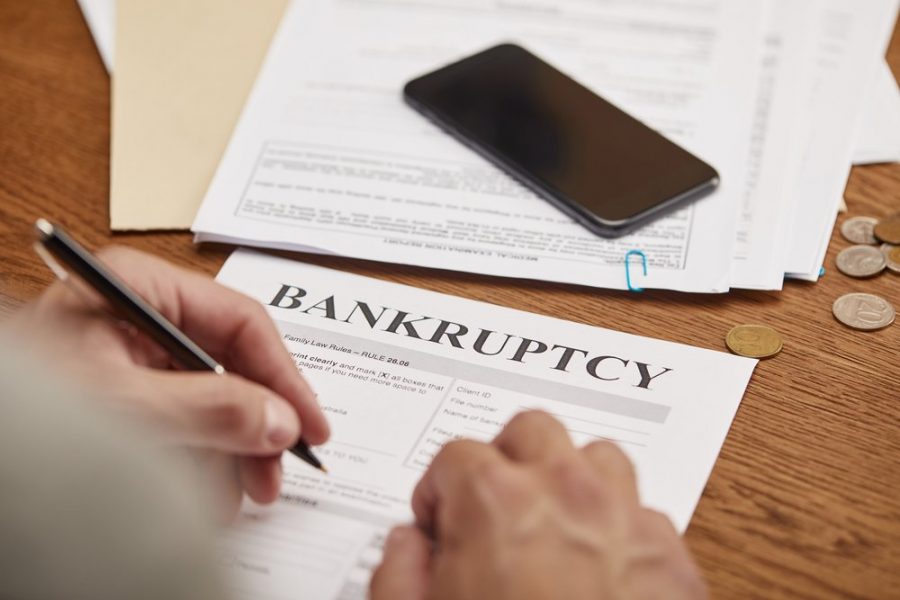When you need to file for bankruptcy, it can be a stressful time. As you struggle to find the right solution and get debt relief, many things can make this process even more complicated. A Chapter 7 bankruptcy filing erases your debts, but there’s a catch. If you have any assets, they will be taken away and sold to pay for your debts to creditors. That includes your car or house.
Can you keep your vehicle if you file bankruptcy under Chapter 7? The answer is yes. You need to meet the requirements of bankruptcy exemption laws or if the bankruptcy trustee decides that you can keep the vehicle provided that you have a payment plan.
What Happens to Your Car After You File for Bankruptcy?
Filing for bankruptcy doesn’t have to mean your auto will end up on the back of a tow truck. But it’s important to know what happens to your vehicle because there are different rules in a bankruptcy case depending on your situation.
In a Chapter 13 bankruptcy, you go into a repayment plan for your debts so that you’re able to keep your assets as long as you keep paying what was agreed. Whether you own the car already or you have a loan, it’s possible to keep it in a Chapter 13 bankruptcy. However, most people file bankruptcy under Chapter 7, so let’s dive in on what you need to do to determine whether you can keep the vehicle.

You Could Keep Your Car Through the Motor Vehicle Exemption
You need to check whether your state has laws on Motor Vehicle Exemption (MVE). State and federal exemptions will be able to protect some or all of the equity that you have on your car.
Depending on where you reside, the amount of equity that can be exempted from your vehicle will vary. Some states, however, will allow you to use the exemption amount set by the federal government to keep your auto.
The federal exemption on motor vehicles is currently set at $4,000. Some states have a lower exempt value, while others are more generous. Texas, for instance, will allow you to exempt the entire value of one vehicle per licensed household member.
Calculating Your Equity in Your Car
In simple terms, the equity in your vehicle represents the portion of the car’s value that belongs to you. You can determine it by subtracting how much you owe the lender from its current fair market value (FMV).
For example, if the current car is worth $5,000. If you own the car outright and do not have any loan balance, then you have 100% equity in it. Your equity is equal to the fair market value which is $5,000.
If you have an auto loan balance and you still owe the car lender a total of $2,000, then you have to subtract that from the current value of $5,000. That leaves you with an equity of $3,000.
Scenario 1: 100% Equity or Lower than MVE
In this scenario, you can keep the car as long as its value (which is equal to your equity) is below the exemption amount. Let’s say you have 100% equity and the FMV of your car is $3,000. If the motor vehicle exemption in your state is $4,000, then you can keep it.
Scenario 2: 100% Equity or Higher than MVE
The answer to whether you can keep your vehicle in bankruptcy will depend on how much higher your equity is compared to the motor vehicle exemption. Here are 3 sample scenarios that could happen when you filed for bankruptcy:
A. You have 100% equity and the FMV of your car is $15,000. If the MVE in your state is $4,000, then the remaining $11,000 is not protected. If this is so, the bankruptcy trustee sells your car and pays you $4,000 back. They will use $11,000 from the sales proceeds to pay your other debts and pay the cost of selling the vehicle.
B. You have 100% equity and the FMV of your car is $5,500. If the MVE in your state is $4,000, then there’s $1,500 not protected. Your options include:
- Use the wildcard exemption if your state has one.
- Ask the bankruptcy trustee if you can be allowed to pay the remaining $1,500 so you can keep it. They may allow this if it is not such a huge amount of money to avoid the hassle and work involved in selling your vehicle.
C. You have 100% equity and the car’s fair market value is $4,500. If the MVE in your state is $4,000, that only leaves $500. This $500 may not be enough to cover the cost of selling the car, pay the trustee, and pay your other creditors. So, the trustee may choose to ask you to pay for the $500 so you can keep your auto or allow you to keep it without payment.

Scenario 3: You still have a Car Loan and Equity is Lower than MVE
Let’s say your car’s FMV is $10,000 and you still owe the lender $7,000. That gives you a car equity of $3,000. If the MVE is $4,000 then you can keep it through a loan reaffirmation.
A loan reaffirmation means that you’re agreeing with the creditor that you’ll keep making car payments even after the bankruptcy discharge. You will, however, have to prove to the bankruptcy court that you can afford to stick to the payment plan per the reaffirmation agreement.
Scenario 4: You still have a Car Loan and Equity is Higher than MVE
In this situation, the decision will depend on how much higher your car equity is. If it’s much higher than the exemption amounts, the trustee may decide to sell your vehicle. But if it is not that high, then you might be allowed to pay for the remaining balance.
A. Your car’s FMV is $20,000 and you still owe the lender $5,000. That gives you equity of $15,000. However, your state’s MVE is only $4,000. That leaves $11,000 not protected by the MVE. The trustee will likely sell the car to pay your other debts and give you back the $4,000. If you live in states where the entire value of the exempt vehicle is protected (such as Texas), you can keep the vehicle.
B. Your car’s FMV is $10,000 and you still owe the lender $7,000. That gives you equity of $3,000. However, your state’s MVE is only $2,000. That leaves $1,000 not protected by the MVE. You could ask if you can pay the $1,000 so you can keep it and continue paying the monthly payments.
Scenario 5: You have Negative Equity
Let’s say the fair market value of the car is $2,000 but you still owe the lender $5,000. In this scenario, you owe more than the current value of the car in the market. When you have negative equity, one option that you can take to keep the vehicle is to redeem it.
Redeeming the car means you’re agreeing with the car lender to pay a lump sum of what the car is worth today and erasing the rest of your debt. So using the example above, you can redeem it by paying the lender a one-time payment of $2,000 to get absolute ownership of the vehicle.
Wildcard Exemptions to Protect Your Car
You can use the wildcard exemption if your state has one where you’re allowed to apply a certain amount to any property of your choosing. It’s a fixed amount determined by the state. You can add this amount to your MVE so that you can keep the car even after filing for bankruptcy.
You Have Other Options When You Have Car Loans

If you have an existing car loan, there are different options you can look into if you decide to keep or let go of your car after your bankruptcy filing.
1. Surrender the Car
If you cannot afford to pay your car loan, you can give back your car, which will wipe out your liability. The lender may wait for your bankruptcy filing before repossessing the car. However, they may also file a motion to the court to lift the automatic stay and get your car as soon as possible.
2. Reaffirm Your Car Loan
If you have a car loan and your equity is lower than your state’s Motor Vehicle Exemption, you can reaffirm your car loan. You will enter in an agreement with your creditor that you will continue paying your car loan. But you will also have to prove to the court that you can do so.
3. Sell Your Car
If your equity is much higher than what is exempted, the trustee may decide to sell your car. The proceeds will be used to pay your debts and you’ll get the $4,000 exempted amount.
4. Pay for the Remaining Amount
If the remaining amount after the exemption is not that high, you can pay for the remaining amount and keep your car.
5. Redeem the Car
When you owe more than what your car is worth in the market, you can redeem the car so that you can keep it. You’ll have to pay the lender the lump sum of what the car’s current value is.
FAQs on Keeping Car After Bankruptcy
Is it better to surrender your car in Chapter 7?
Yes, it’s better to surrender your car when you file for Chapter 7 bankruptcy than wait for it to be repossessed. When you return the car, you will be free from your missed payments.
How soon can I buy a car after filing Chapter 7 bankruptcy when I lose my car?
You can buy a car after filing for bankruptcy in around three to six months since your debt has been discharged. Remember that you need to take certain steps to improve your credit score before you apply for a car loan.
When do I have to surrender my car in Chapter 7?
If you’re behind on your car loan payments, the bankruptcy court will likely order you to surrender your car when you filed a bankruptcy case. If you’re current on your payments, you may be able to keep it.
Can I keep 2 cars in Chapter 7?
Yes, you can keep two cars as long as you can protect the equity on both cars with the bankruptcy exemptions. You should also be current on your loan payments, and you should prove that you can continue to make car payments without experiencing undue financial hardship to you and your family.
Do I have to include my car loan in Chapter 7?
No. According to the Bankruptcy Code, you don’t have to surrender all your assets when you file for bankruptcy, just like in Chapter 13 bankruptcy. However, your loan needs to be current if you want to keep your auto and you have to keep making payments to your car lender after bankruptcy.
Conclusion
Keeping your car after Chapter 7 bankruptcy is possible while you get debt relief through the bankruptcy code. Determine whether you have enough equity to keep your car depending on the bankruptcy exemptions in your state.
Weigh in your options, such as selling your vehicle or getting a loan reaffirmation agreement with your car lender. You can also redeem your car and pay for the balance when the bankruptcy exemption amount has been deducted.
If you feel overwhelmed, a bankruptcy attorney will be able to guide you when it comes to bankruptcy laws. Find a bankruptcy law firm that will conduct an evaluation of your financial situation. Bankruptcy attorneys can also help you manage your debts, including unsecured debts such as credit card debts, or determine whether Chapter 13 is a better option to get debt relief.







